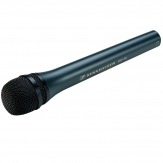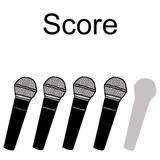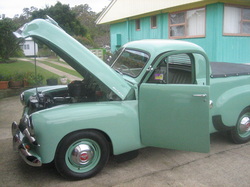|
First Impressions I recently had the opportunity to try out an MD 46 and it just so happens it might be the perfect microphone for a new project I am working on for the website. I am collecting a series of words spoken by native speakers in a variety of languages and the specifications for the MD 46 look very promising. The MD 46 is designed specifically to capture clean vocal recordings. The manual describes it as a microphone specifically created for TV and radio reporting. The unit itself is fairly long and sturdy enough to cope well with day to day use, but it is not overly heavy or awkward to use. I am going to be interested to see how it deals with wind noise as it is built with a double layered wind shield to prevent wind noise so I plan on using this directly without added wind protection to see how it copes. Technical Data Later Observations The MD46 is designed primarily as a journalists microphone, as such perhaps I am not the best person to be defining if it is a good piece of equipment or not but as a mic for vocals, especially in an environment with potential contamination I found it to be very good. If I needed to work on a documentary or any kind of project that required talking to people in public places I would be quite confident that this mic would capture the material I needed cleanly.  Initial Thoughts The Sennheiser MKH60 was designed to work, to work for a long time, under a variety of conditions and to provide good quality sound capture. Condenser microphones are traditionally more fragile than dynamics and yet as a shotgun mic the MKH60 has a need to be able to cope with a wide variety of recording situations.. The MKH 60 has been my main workhorse microphone for years, and is still one of my favorite pieces of equipment. Based on an RF condenser the MKH 60 provides excellent sound capture capabilities with very low noise levels. It’s sturdy and deals well with humidity and condensation. From a usage point of view the only issue I have is that sometimes it’s too sensitive at capturing what it’s pointed at. I have often found I have inadvertently recorded background material that I would not have considered noticeable because it was so far away, but the sensitivity of the mic has allowed it to capture distant sounds. This is far more a criticism of the user than microphone itself, but it can take getting used to. At 125 dB the maximum SPL levels are quite adequate for a large range of recording purposes, it is important to be aware of the high-pass filter when recording instruments, especially bells, cymbals and similar metal instruments. If active it can result in distortion of high frequency signals even though the input signal appears fine. I would not generally use or recommend the MKH60 for instrument micing, while it is capable of recording a signal from an instrument it is not what it was designed for and there are many other far more suitable choices. The MkH 60 does not have the capability to provide its own power via battery so as such it requires phantom power from the recording device of from an in line power supply. As most digital recorders these days include phantom power this is a very minor issue. As it is my main tool for recording sound effects I usually have the MKH60 mounted in a shock mount and wind shield system. This prevents the two main issues of vibration and wind being a problem when recording. When mounted in this way the MKH60 is excellent for both sound effects and dialogue recording. As a hypercardioid mic the MKH60 takes a little practice to be used for dialogue recording especially when using a boom pole. It can be quite easy for a sound source to move off target if the user is not paying attention, this can result in sound quality differences as sounds captured at an angle will be colored differently. Essentially the MKH60 will record what you point it at, even at considerable distance, but because of this you need to make sure you aim it correctly. Technical Data Later Observations Having owned and used an MKH60 for nearly 6 years I am fairly confident to say this is a good mic and well worth the money spent. I always treat my equipment carefully but regardless things get dropped and knocked around. The MKH60 still looks practically new and functions as well as it ever did. I think I have a better understanding of its limitations now and I would still not recommend it for instrument micing, but then I doubt it was ever designed for this purpose. It is however an excellent mic for location sound recording as well as vocal recordings on location or on set. It has been a good and consistent piece of equipment that I have grown to rely on. In the real world It is difficult to think of one good example of this microphone being used int he real world. I have had this mic for many years and at the time of writing this the library contains over 17,000, 75% of which were captured using the MKH60. In many ways the results speak for themselves. This microphone has been a sturdy workhorse for nearly a decade and is something I rely on without giving it a second thought. It is by no means perfect for every situation, but what it does, it does very well. Verdict Good Built to last Low noise levels Bad No internal option for power Not Cheap Website www.sennheiser.com |



 RSS Feed
RSS Feed
